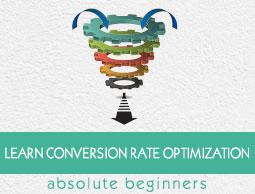Conversion Rate Optimization - Goals Setting
You need to determine what success is to you. In other words, you need to find out what are your goals. A goal is a metric to find out whether your website is helping your business in yielding profit. Goals can be also termed as −
- Leads
- Sign-ups
- Account creation
- Downloads
- Cart, etc.
Identifying Goals
Most of the business people don’t know what is their ultimate goal. Often we see webpages cluttered with lot of unwanted information or with less information. If you are an ecommerce company your goals should be ‘Cart’, ‘Purchase’, ‘Product Sale’, ‘Average Order Value’, etc. If you are in B2B, then quotes, phone calls, enquiries must be your target.
When designing a website, really make it clear what business needs from this website - leads? or Cart? or something else? Once you are sure of your goals, you can create an ongoing series of experiments to reach those goals.
To identify your goals, follow a mantra. Find out your ‘Marketing Goals’, then make sure that your ‘Business Goals’ must follow those marketing goals. Indirectly, you will be able to set your ‘Conversion Optimization Goal’. Your business goal is how to make money and so is your conversion goal. If social media shares or gives you direct sales, you must optimize them rather than applying efforts on reducing the bounce rates, which is not affecting your business that much.

The Goal Waterfall Model
When optimizing your website design for goal capturing, your booking or purchasing a widget should be clear and in focus.
Macro Conversions v/s Micro Conversions
Macro conversions are those events that actually describe goal completion. Some of which are −
- Product sale
- Request a quote
- Call now
- Cart
Micro conversions are those events that are not actually lead generated but an assisting lead that has indicated a potential to goal completion. Like −
- Downloading a brochure
- Signing-up
- Reading more
- Liking and sharing a Facebook page
- Watching a promotional video
- Following on a social platform
They are not directly sale but are of great importance. They may help you generate leads in the future. They even serve the purpose of branding your business.
Measuring Goals
Goal measurement is used for understanding how successful our plans (different goals) are. In B2B, calls and quotes work well, in ecommerce the average order value is required. But side goals like read articles, sign-ups also assist in goal completion.
To measure goals, make an ordered list, listing goals priority-wise. Manage to complete your goals accordingly. Once you are done making this list, set relative goal values. This brings you closer towards the optimization process. Spend more time in refining these values. Use the Analytics tool. Google analytics is the best tool to measure the goal. Google analytics helps to measure the sale of the products. With the help of ecommerce goals, we can measure the sale according to each product. We can easily measure which is the bestselling product. Event tracking helps to measure the social media goals like how much goal completion via social icons.
Following are a few goals measures, which will be of great help in tracking.
Contact Us − Track when the users contact you for more information or help.
Newsletter Subscriptions − Keep track of how many people are signing up for your newsletter.
View/Request Product Demo − Useful if your website sells a product.
Ecommerce Tracking − To track and get useful Ecommerce Analytics reports, we recommend using the Ecommerce Analytics functionality.




